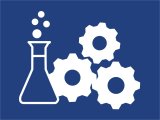ORD Strategic Goals and Objectives
ORD has identified four overarching goals—each with a set of clearly articulated and achievable objectives—to guide its work.
- Goal 1: Advance Science and Technology
- Goal 2: Support Decision Making
- Goal 3: Build a Healthy Workforce and Organization
- Goal 4: Be a Trusted Scientific Source

Goal 1: Advance Science and Technology
Improve protection of human health and the environment through scientific advancements, innovative research, and technology development using systems-level approaches.
Objective 1.1 Develop holistic scientific understanding using systems approaches
Today’s environmental challenges are increasingly complex, far reaching, and interconnected. As recommended by the National Academies of Sciences, Engineering, and Medicine (see Transforming EPA Science to Meet Today’s and Tomorrow’s Challenges) ORD’s research will embrace a One Environment-One Health approach that emphasizes the dynamic connectivity between people; animals, plants, and other life; and our environment. In this overarching systems framework, our intramural and extramural research will encompass social, economic, and environmental systems; integrate across multiple levels from molecules to communities and ecosystems; address different geographic areas and timelines; and break down traditional boundaries between scientific disciplines. Applying systems approaches will enable more complete understanding of environmental challenges, such as climate change and the cumulative impacts of multiple stressors, increase our ability to identify connections between systems, and improve our understanding of the impact of potential solutions.
Objective 1.2 Innovate at the leading edge of environmental research
Innovation includes conceptualizing, developing, and implementing novel research, technology, or scientific research processes that add value for meeting the mission of ORD. ORD must have an innovative, creative, and nimble culture that pioneers better approaches to address existing challenges while also enabling us to anticipate and effectively respond to new and emerging challenges. As a leader in research that informs decisions to protect human health and the environment, we will embrace and support cross-disciplinary and diverse ideas at all levels of the organization, explore high-risk/high-reward research opportunities, and advance near-term and next generation scientific, technological, and process solutions. We will expand and strengthen our internal culture of innovation and seek new ideas and solutions from a diversity of external sources.
Objective 1.3 Expand and strengthen partnerships and collaboration
Tackling increasingly complex health and environmental challenges requires integration of knowledge and resources across organizations with complementary expertise, experience, perspectives, facilities, technologies, and reach. We will strategically enhance and expand external research collaborations to leverage the diverse talents and resources of existing and new partners, including federal agencies, states, Tribes, local governments, communities, academic institutions, non-governmental organizations, industry, international organizations, and others. We will work with our partners to integrate diverse bodies of knowledge and information, including Indigenous Knowledge, into our research efforts. Collaborative efforts will enable EPA to address complex challenges more effectively.

Goal 2: Support Decision Making
Deliver the scientific and technical information our partners need to inform their decisions to protect human health and the environment.
Objective 2.1 Deliver science to inform EPA’s actions
ORD’s science, technology, and research inform EPA’s actions to protect human health and the environment. We will engage extensively with EPA program and regional offices to identify and address current, emerging, and longer-term research needs and integrate research efforts across EPA programs. We will provide timely, relevant, and high-quality scientific information and technology, and reliable and accessible data, to our EPA partners to help support the Agency’s actions, develop solutions, and inform decisions.
Objective 2.2 Translate science into solutions with our external partners
We are committed to developing and translating research, consistent with EPA’s mission, that meets the needs of our external partners, including states, Tribes, local governments, and communities. We will emphasize stakeholder engagement throughout the research process, including problem formulation, research planning, implementation, dissemination, and evaluation. We will integrate and enhance community-engaged, solutions-driven research and participatory science in our research portfolio, including research aimed at helping those communities facing health inequities or environmental justice concerns.
Objective 2.3 Provide technical assistance and support
Internal and external partners rely on ORD’s expertise for making scientifically defensible decisions. Our technical support activities include direct assistance, training, outreach activities, and site-specific support to internal and external partners. We will continue to provide technical assistance and support to help our partners tackle existing, emerging, and future environmental challenges, including at Superfund and other contaminated sites, in response to and in preparation for emergencies and disasters, and in other situations as needed. We will also continue integrating technical support into our research programs to assist our partners with both proactive and reactive needs.

Goal 3: Build a Healthy Workforce & Organization
Strengthen and sustain a workforce and organization that have the skills and expertise necessary to anticipate and respond to current and future challenges to human health and the environment and that value inclusivity.
Objective 3.1 Recruit, develop, and retain a resilient workforce
ORD is committed to harnessing the power of a resilient workforce to drive innovation and creativity and to anticipate and respond to emerging human health and environmental challenges. Our workforce needs breadth, depth, and diversity of expertise, experience, and perspectives to enable us to be effective and innovative in conducting our work. We will continue to build an inclusive, multi-talented, highly capable, and highly effective workforce that embraces ORD’s Principles, shares a common sense of purpose, and is empowered to contribute to the impactful environmental research needs of the Agency and the nation.
Objective 3.2 Strengthen our organization through inclusivity and equity
ORD must have an inclusive and equitable work environment where every employee feels valued, respected, and empowered to contribute their unique perspectives and talents. We are committed to strengthening our programs and activities to be inclusive, to provide opportunities for all our workforce, and to result in equitable impacts to our workforce. We strive to build a culture of physical, mental, and social well-being; collegiality; mutual respect; mutual support and mentoring; psychological safety; opportunity; recognition; and development. By creating an environment where every employee is valued and empowered, we enhance our ability to address complex environmental, administrative, managerial, and operational challenges and deliver impactful and beneficial outcomes for ORD, EPA, and our partners.
Objective 3.3 Use resources strategically
ORD’s efficient management of limited resources is critical to achieve our mission. We will comprehensively assess resource needs and allocation, explore innovative operations and continuous improvement opportunities, and leverage resource-sharing collaborations to meet modern scientific expectations. To maintain the scope, rigor, and quality of our scientific enterprise, we need state-of-the-art research equipment, specialized research assets, and resources for the administrative, managerial, and operational functions that support our scientific enterprise. We will be a leader in adoption of sustainable practices and promote a culture of resource stewardship amongst our workforce and at our facilities.

Goal 4: Be a Trusted Scientific Source
Serve as a trusted source of scientific information for the Agency, the nation, and the world.
Objective 4.1 Ensure science of the highest quality
It is essential that research organizations uphold the highest standards of scientific quality and credibility. ORD will ensure that our research and development activities continually meet the most rigorous scientific standards by following robust processes and procedures for data gathering, generation, management, and verification; quality control; and independent peer review. We will lead efforts with EPA programs and regions to develop and coordinate consistent and quality science practices and standards across the Agency. By upholding scientific rigor, we maintain our long-standing reputation as a leading trusted source of environmental expertise nationally and globally.
Objective 4.2 Be leaders for EPA’s scientific integrity
Scientific integrity is essential to ensure the public can trust the quality and validity of EPA’s work. We will continue to uphold scientific and ethical standards, communicate effectively with the public, enhance transparency within scientific processes, and safeguard EPA’s scientists and science from political interference or personal motivations. By upholding these principles and practices, we reinforce the integrity, quality, rigor, and objectivity of the scientific information and processes relied upon in policymaking, further strengthening public confidence in EPA’s work. We will maintain our leadership role in EPA’s commitment to sustain and grow a culture of scientific integrity.
Objective 4.3 Communicate science effectively
ORD is committed to transparency and open communication. We will continue to implement communications and outreach activities at all levels of ORD that engage the American people, the scientific community, elected officials, and other stakeholders in our research. Our effective communication practices will help translate ORD research to be understandable and useful. We will continue to make our data, results, and tools publicly available and explore ways to improve accessibility. We will seek opportunities to enhance our communications through new technologies and platforms, collaborations, and educational partners.
Measuring Our Success
ORD has developed Key Performance Indicators (KPIs) to ensure we meet our strategic goals and objectives. KPIs provide a measurable way to assess the effectiveness of the strategies outlined in the strategic plan and determine whether it is producing the desired results. We will regularly monitor each KPI to identify both areas of success and those that require additional attention, allowing for adjustments to the implementation of the strategy as needed. These actions will not only assist to ensure we stay on track to achieve our strategic goals, but also provide valuable insights into the effectiveness of operations, allowing for continuous improvement.
The Office of Research and Development additionally contributes to broader Agency-wide metrics under the EPA FY 2022-2026 Long-Term Performance Goals, which can be found in EPA’s FY 2022-2026 Strategic Plan, available at: https://www.epa.gov/planandbudget/strategicplan.
